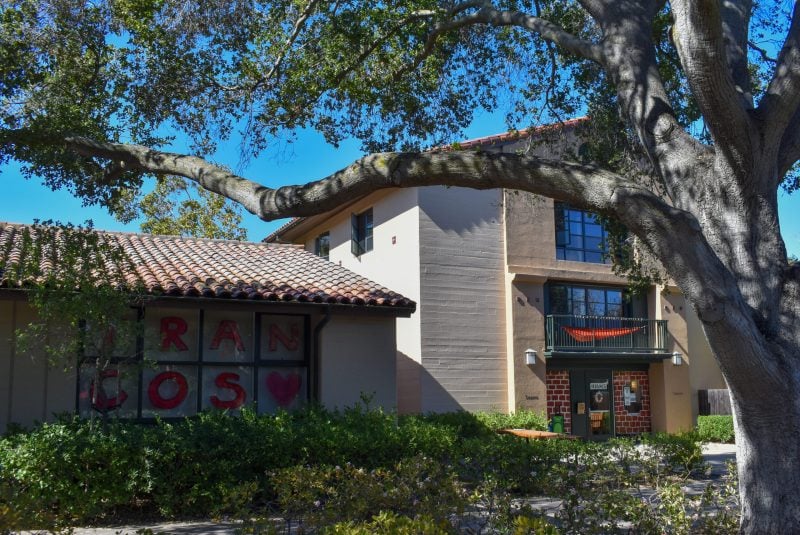The neighborhood system is undergoing changes yet again.
Students will no longer have to stay in their assigned neighborhoods following their frosh year, and the Row and Wilbur Hall will merge into their own respective neighborhoods, the Stanford Report announced Thursday morning.
These shifts — among others — arrived following recommendations from the Neighborhoods Task Force, a committee of students, faculty and staff members created in May 2023 to consider long-term improvements to the neighborhood system. These changes will be implemented starting with the 2024-2025 housing process.
“I am very happy with how we took in student voices and concerns and made a neighborhood system that is more fit for students,” said ASSU Senator Ivy Chen ’26, one of the six undergraduate students on the task force.
Mirrielees, an apartment-style dormitory, will also join the Wisteria neighborhood under the new changes. The number of undergraduate spots in EVGR-A will additionally decrease until the buildingis phased out entirely for undergraduates as a housing option. Finally, sophomores will now live in “sophomore-priority spaces” — mainly one-room doubles and other shared room configurations — to ensure more juniors and seniors have access to singles, two-room doubles and spots on the Row, Chen said.
“There should not be juniors in sophomore housing,” said Evan Sing ’26.
The neighborhood system had been previously criticized for restricting undergraduates to houses within their neighborhoods, and limiting students’ abilities to live with peers from others. Now, upperclassmen will be able to live in any residence regardless of their original neighborhood.
“This just equals the playing field out for a lot of people,” Sing said. “It’s not like you are condemned to either GovCo, or this house on the Row or EVGR.”
Students had also condemned the lack of geographical contiguity in the previous division of neighborhoods. To address this, the Stanford Report said, the Row will become a separate neighborhood — with the exception of Muwekma-Tah-Ruk and the Well House, which will be in Olive.
According to Chen, the neighborhood comprising the Row will receive a new name. Sequoia and Hyperion, the two neighborhoods that made up Wilbur Hall, will also merge and adopt either “Sequoia” or “Hyperion” as their final name.
“I like [the new system] because nobody’s told me why it’s bad yet,” Sing said.
The Neighborhood Task Force, led by English professor Elaine Treharne and former Vice Provost for Student Affairs Susie Brubaker-Cole, began meeting during spring quarter of last year, Chen said. Meetings intensified in frequency and length when students returned to campus in the fall, with Chen participating in three-hour meetings thrice a month.
In these meetings, members of the task force discussed student input from a community survey sent out in late 2023. According to Stanford communications director Luisa Rapport, the survey received 1,523 responses from students “across all class years and neighborhoods.”
“It was really amazing seeing that students were really passionate about this issue and set the time out of their day to fill it out and express their interests, their opinions and their views about the current neighborhood system,” Chen said about the survey.
The task force submitted their report prior to winter break. Now that the changes to the neighborhood system were approved, Chen says the task force’s work is done.
“By no means is any housing system and any university perfect, but I think we are moving toward the right step with the changes we enacted,” Chen said.
While many students support the recent developments to the neighborhood system, others seem confused by the role each neighborhood will play in the coming years.
“Why are they keeping them at all?” asked Ishani Mukherjee ’26.
Since its creation, the main goal of the neighborhood system has been to foster continuity and community, according to ResEd’s initial neighborhood system proposal from 2018. However, since its adoption in 2021, the neighborhood system has been an unpopular addition to the Stanford residential experience. Neighborhood events, though flush with funds, saw little support from students during the 2022-2023 school year.
Although several popular events and the new crop of frosh seemed to sway public sentiment, what many perceived as a stressful housing process this past summer did little to change the neighborhood system’s stubborn reputation.
But Thursday’s announcements led to an outpouring of support on Fizz, indicating that the recent changes have finally improved students’ perceptions of the neighborhood system.
“The neighborhood system has changed. Yay!” Chen said. “It just makes me so happy that we’re doing things for the students, by the students.”
